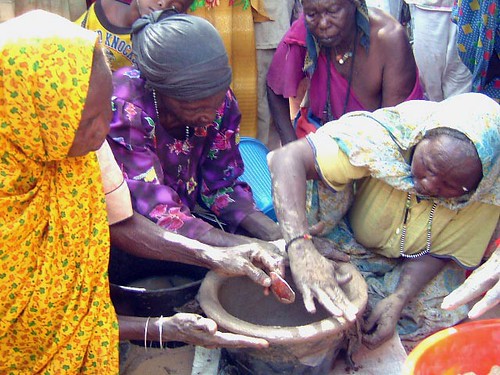 Ethan Zuckerman
Ethan Zuckerman has spent his career building social networks through innovative technology.
He has been watching as the sprawling network of bloggers, technologists and working folk self-assemble tools, resources and coordinated efforts for search, rescue and recovery in the Gulf.
One massive effort is
the PeopleFinder database which, according to Salesforce.com, contains over 87,000 records in the database, all entered by hand by volunteers. Imagine a state bureau trying to tackle that over Labor Day weekend!
The first design principle of PeopleFinder is "to bring people and data together."
The design aims to promote convergence: convergence of people who seek the same person, convergence of information about a person obtained from various sources, convergence of duplicated data, and ultimately convergence of missing people with their loved ones.
Zuckerman describes the timeline of tech events in conjunction with events on the ground in New Orleans and the Gulf.
The emerging story describes a virtual immune system swarming in response to the body blow of Katrina: individual groups establishing
wikis and blogs; converging efforts behind a single URL (
Katrinahelp.info); the use of on-line sales space
Craigslist to offer shelter and supplies;
AirAmerica Radio's Katrina Voicemail; amazing feats of digital heroism to link up families and account for the missing.

He identifies some guiding principles, and an evolving model for future disasters.
"Jeff Jarvis, who's done an excellent job of blogging various Katrina recovery efforts, sees an opportunity for a dialog about reactions to future natural (or, god forbid, manmade) disasters -- he's calling the idea Recovery 2.0."
From
Jarvis' blog:
The goal is to be ready -- God help us -- for the next disaster so people can better use the internet -- via any device -- to better:
1. Share information,
2. Report and act on calls for help,
3. Coordinate relief,
4. Connect the missing,
5. Provide connections for such necessities as housing and jobs,
6. Match charitable assets to needs,
7. Get people connected to this and the world sooner.
Zuckerman's observations hold to just about any socially oriented effort, whether focused on acute short-term catastrophes or long-term recovery:
- People want to help.
- Sometimes code is the solution. Sometimes 2,000 loosely organized people are the solution.
- Simple tools work surprisingly well.
- It's not just your tools that need to be robust. You're dependent on everyone else's tools as well.
- Posses rock.
- Assume burnout.
As one of the core team members at Tripod in the 1990s, Zuckerman was at the center of a web-based communitity, that served as an early development lab for the blognation phenomenon.
Currently, his main affiliation is with the
Berkman Center for Internet and Society at Harvard Law School. In a former life, he also lead a cadre of self-proclaimed geeks into the colorful chaos of West Africa, through
Geekcorps. The organization transfers skills to the Third World, or -- in the words of Jim Moore -- the
second superpower.

Geekcorps' early business model was very simple: (1) Geeks beget geeks; (2) Africa needs geeks; (3) Give a geeks money to go to Africa.
His blog is even titled,
My Heart's in Accra.
One project in this area is
BlogAfrica, a project to help Africans learn about weblogs and to aggregate content from African weblogs. Ethan also works with anonymous blogservers for use by people in the human rights community, allowing human rights workers to blog about situations in their countries without compromising their security.
 This may be the year of social enterprise awakening.
This may be the year of social enterprise awakening.






















 What is Enlightenment? Magazine
What is Enlightenment? Magazine





